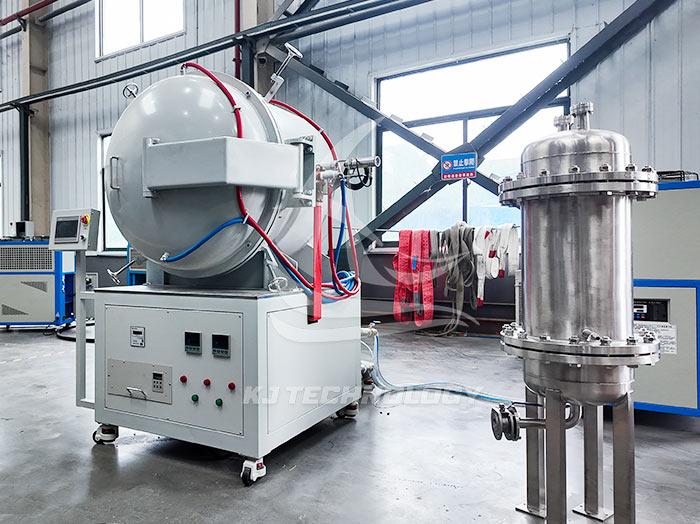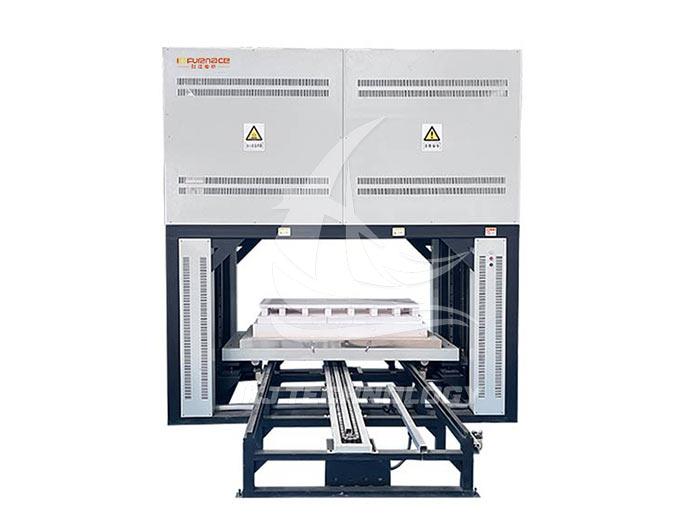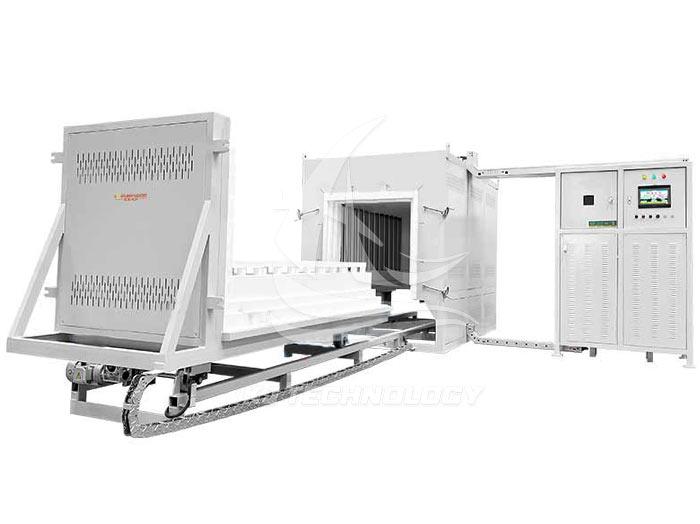Application of Vacuum Powder Sintering Furnace in the Medical Industry
 09-09-2025 Author: KJ technology
09-09-2025 Author: KJ technology
The application of vacuum powder sintering furnace in the medical industry is mainly reflected in the preparation of high-performance and high-precision metal and ceramic implants and medical devices. Its core advantage lies in the suppression of oxidation and improvement of material properties through vacuum environment, combined with precision temperature control technology to achieve complex structural forming, thus meeting the strict requirements of biocompatibility, mechanical properties and processing accuracy in the medical field. The following is a detailed explanation of specific application scenarios and technological advantages:
1. Typical application scenarios
Manufacturing of orthopedic implants
Titanium alloy joint and spinal fixator: Vacuum sintering can avoid hydrogen embrittlement of titanium alloy at high temperatures, while filling pores through liquid-phase sintering, resulting in higher implant density and improved fatigue life. For example, a certain orthopedic implant manufacturer has improved the fatigue life of its products by using a vacuum sintering furnace, approaching the actual stress requirements of human bones.
Porous titanium alloy bone substitute material: By combining powder metallurgy technology with vacuum sintering, a porous titanium alloy with a structure similar to human bone can be prepared. The elastic modulus is reduced, and the pore structure promotes bone cell growth and drug transport, shortening the postoperative healing cycle.
Dental implants and restorations
Zirconia ceramic dental crown: Vacuum sintering can eliminate the pores between zirconia particles, improve light transmittance, increase hardness, and have excellent biocompatibility, without the risk of metal allergies.
Cobalt chromium alloy denture support: Vacuum sintering combined with metal injection molding (MIM) technology can prepare complex denture supports with extremely thin thickness, higher accuracy, and meet personalized restoration needs.
Precision components of medical devices
Surgical instrument blades: Vacuum sintered hard alloy blades have higher hardness and 5 times higher wear resistance than high-speed steel, and can be directly formed into complex blade structures through powder metallurgy technology, reducing subsequent processing volume.
Minimally invasive interventional catheter components: Nitinol catheter components are prepared by vacuum sintering, utilizing their shape memory effect and superelasticity to achieve precise positioning and release of the catheter within the blood vessel. The sintering process avoids oxidation and embrittlement, ensuring the flexibility of the catheter.
2. Analysis of Technical Advantages
Inhibit oxidation and impurity pollution
Medical implants require long-term contact with human tissues, and any oxidation or impurity contamination may cause rejection reactions. The vacuum sintering furnace reduces the pressure inside the furnace to below 10 ⁻ Pa, completely eliminates oxygen, avoids oxidation of materials such as titanium alloys and cobalt chromium alloys at high temperatures, and reduces the volatilization of impurities such as carbon and sulfur to ensure higher material purity.
Precise temperature control and densification
Medical implants require high strength and low elastic modulus, which requires materials to be dense. The vacuum sintering furnace is equipped with an intelligent PID controller and ± 1 ℃ temperature fluctuation control, which can achieve multi-stage program temperature control (such as pre sintering, main sintering, cooling), ensuring sufficient diffusion and bonding of powder particles.
Ability to form complex structures
By combining powder injection molding (MIM) or 3D printing technology, vacuum sintering furnaces can directly prepare near net formed parts, reducing subsequent processing volume. For example, a sensor manufacturer uses vacuum sintering MIM technology to produce orthopedic implants with controllable size shrinkage, meeting personalized medical needs.
Environmental Protection and Clean Production
The vacuum sintering furnace operates in a closed manner with no exhaust emissions, meeting environmental standards. Compared to traditional air sintering, which requires subsequent acid washing to remove oxide skin (resulting in heavy metal containing wastewater), vacuum sintering does not require this step and has higher cleanliness, reducing the risk of medical product infection.








